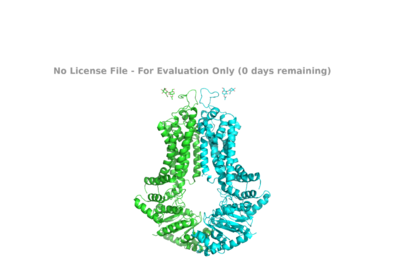Introduction
ABCG2 is a transmembrane multidrug transporter which moves molecules across the intra-cellular membrane and out of the cell by utilizing ATP. Each ABCG2 protein is a homodimer of transmembrane domains and nucleotide binding domains.
Function
ABCG2 transporters are usually seen in apical membranes found in the liver and kidneys in order to move xenobiotics (undesirables) out of the cells. They also excrete the vitamins riboflavin and biotin into breast milk. A xenobiotic will bind to the binding pocket of ABCG2 on the inside of the cell and ATP will move to bind on each nucleotide binding domains. This causes ABCG2 to undergo a conformational change and pushes the xenobiotic through the channel and out of the cell.
Disease
Multidrug resistant cancers are due to ABCG2 excreting cancer drugs out of the cell before they have the chance to kill the cell. Some of these cancers include breast, ovarian, and lung.
Relevance
Due to ABCG2 excreting xenobiotics from the cell, they also transport essential cancer drugs out of the cell. By utilizing certain inhibitors (5D3 and MZ29), it is possible to shut down these transporters in order to get cancer drugs to remain in and apoptosis the cell. However, this could have residual effects on the excretory system as ABCG2 would no longer be able to excrete anything from the cell, including those detrimental to the body.
Structural highlights
References
Student Contributors

